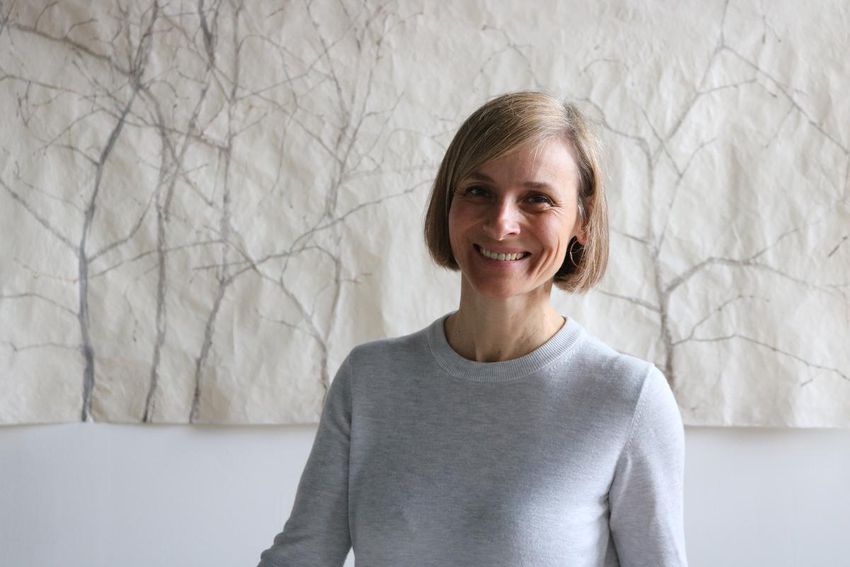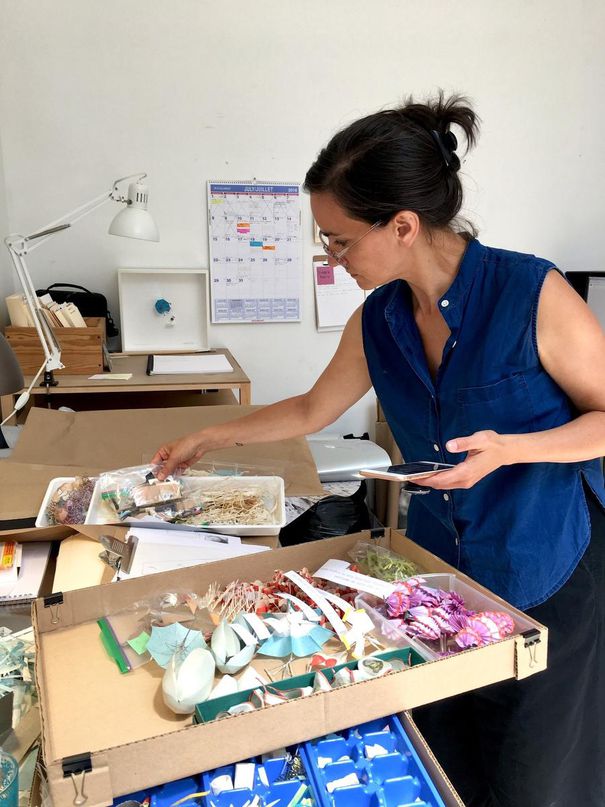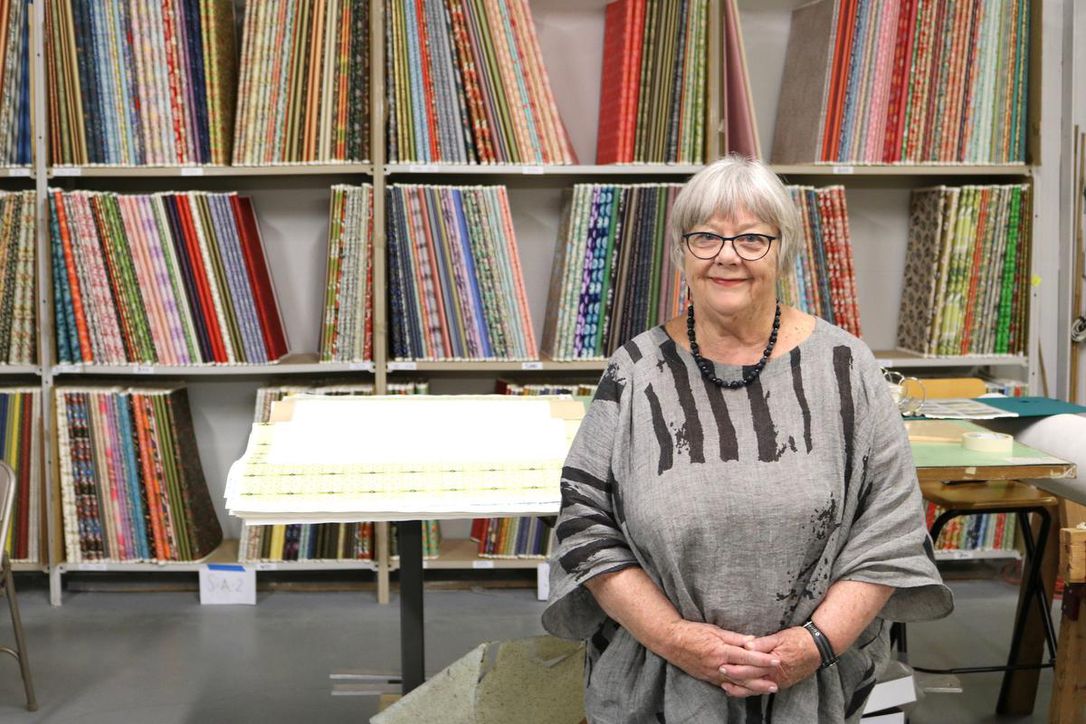Written by Debra Norton for The Star, June 8th 2019. Published online here.

Nancy Jacobi has been passionate about traditional Japanese washi paper since she discovered the handmade paper while teaching English in Japan forty years ago. “It was everywhere at that time and everything you bought from a store was packaged in some wonderful paper,” says Jacobi. “In Canada, the paper industry was very practical. There just wasn’t any beautiful paper around.”
So, she decided she would bring it home to Toronto and started to sell it out of the trunk of her car in 1978.
Washi is the Japanese word for the traditional paper made by hand using the long inner fibres of three renewable plants, Kozo, Gampi and Mitsumata, all native to Japan. Made since the 7th century, washi paper is known for its strength and versatility and has a variety of uses including shoji paper screens, lamps, window coverings, and archival book restoration by conservators and bookbinders.
Rembrandt used Japanese paper for his drawings and etchings and some of his students and contemporaries used the paper as well. “The paper was expensive and hard to get, but artists loved it. There are stories of the artists chasing down the Japanese dealers when they came to town to try and get some. It was like gold,” Jacobi said.
Bookbinders and calligraphers were her first customers, says Jacobi, but she wanted to get the paper into the hands of artists and makers.
“The artists who buy from us almost always continue because the traditional heritage papers have this appeal and practicality … the paper has been touched by at least ten pairs of hands,” says Jacobi. “It has this human warmth.”
Soon she was selling to stores like The Papery on Cumberland and eventually she opened her first retail location, The Japanese Paper Place on a gritty stretch of Queen St. W in 1982. “It was the land of used appliances,” says Jacobi. “But I liked that because creative people would come there. Everybody who came in those days would feel like they had discovered it and go and tell their friends … but I knew that I would have to do more than just show people the paper, people would need to know how to use it.”

Tania Love, a visual artist based in Toronto discovered Japanese paper in the late 1990s at Jacobi’s shop.
“That’s probably where a lot of people discovered Japanese paper,” says Love.
“Very simply, I love what it does. It’s very sensitive, it seems almost delicate and fragile but it’s incredibly resilient. Those qualities that are embodied in the paper, are also themes that are integral to my work. In my own practice, there is a pairing between the medium and the theme.”
Jacobi’s business, now located in Etobicoke, is one of the largest suppliers of Japanese paper in the world with thousands of different kinds of paper, but artists still seek her out for the handmade papers which she calls Heritage Washi.

Cybèle Young is a Toronto based artist and author who creates miniature worlds out of fine Japanese paper. Her intricate paper sculptures are inspired by everyday experiences, objects and abstract shapes.
Quality and sustainability go hand in hand, says Young. “When you are working with these materials it’s not just the ethics behind it, but that things made ethically are a better product. Any of the machine-made papers don’t come close to doing what the sustainably made papers do, and they are only sustainable because they are a deeply honed skillful craft – they are listening to the earth, and are listening with their fingers, nose, ears and eyes.”
In Japan, the everyday use of washi has declined as young people leave the villages for urban centres, and traditional washi makers struggle with few successors. In the 19th century there were approximately 100,000 families making washi. Now there are fewer than 200, says Jacobi.
“A lot of things are hampering the industry there now. One of them is the rarity of really good fibre. Japanese Kozo makes the best paper,” says Jacobi.
It’s not that there is a shortage of plants, but that there is no one to process them. The process involves a multitude of people – a village, and that in itself is part of the challenge. The families who make washi used to be in communities and the whole village may have been involved in the process. With a changing market and a demand for cheaper, lower quality paper, the situation can look bleak.
“People don’t realize how strong, versatile, long-lasting and sustainable it really is. It may look fragile but it’s deceiving,” says Jacobi. “We have a lot of things that the world will never see again…how many crafts or art forms are still practised the way they were 1400 years ago?”
But Jacobi’s initial instincts when she started all those years ago may be the way forward, which is why her passion for artists endures.

“Nancy really wants to work with artists and she paves the way for artists to do what they do,” says Elizabeth D’Agostino, who works with print media, sculpture and installation.
The first time she worked with the paper she realized it would be life-changing, says D’Agostino.
“I took the thinnest and strongest piece of Gampi and I started working with it, and the way that the marks, my etchings would transfer – I couldn’t get that anywhere else, on any other paper. It was translucent and was very physical, I just found I could do more with it.”
Jacobi often hosts workshops and events at the warehouse, including Washi Wednesdays where local artists demonstrate the artistic uses of washi and participants get a chance to create and learn more about the ancient material.
“I love it when people do something brand new with it. It’s very exciting when someone studies it enough to come up with something different and wonderful. I feel as excited by that now as I did in the very beginning.”

